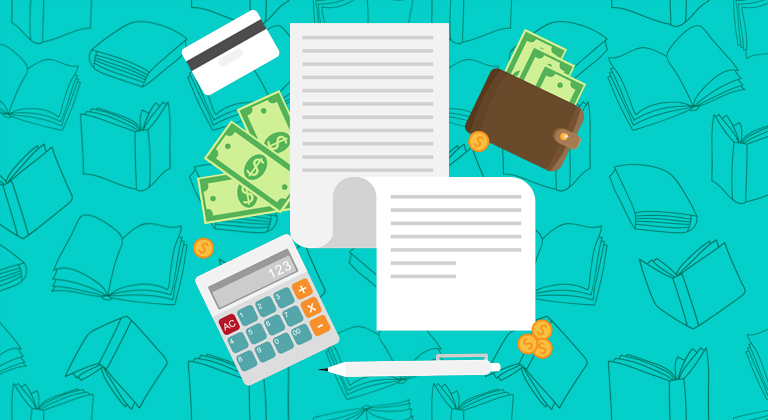How to Tell a Story
Knowing how to tell a story is one of the key elements to being an author, but effective storytelling is more than just having a strong grasp of the language and a story you want to tell. If two writers were given the same story to write, told the same key details and given the same list of characters, they would both end up with very different books. And regardless of how great the actual story they were given was, there is no guarantee that both, or even one, of the resulting books would be bestsellers.
Whether you’re writing a short story or a novel, you need to weave an engaging tale that takes your readers on a journey, keeping them hooked right through until the very last page. How you do that is the tricky part, but Ginger is here with the secret of how to do just that.
Storytelling is a craft as old as humanity. Since the days in which we communicated through barely more than grunts, the art of telling stories around the campfire has remained both evolving and yet remaining the same – a timeless way to share generational experiences and connect with people we might never otherwise have the chance to meet.
But what IS a story? That’s a question that seems so easy to answer, and yet at the same time many of us know what a story is without truly being able to explain what a story is.
But being able to tell a story is the most fundamental skill for any writer – fiction or non-fiction. A story is a powerful, tried-and-tested format for engaging with people and the more time you spend studying the craft of storytelling, the better and more successful your writing career will become.
What is a story?
At school, you were probably taught the same thing as I was – that a story “has a beginning, a middle, and an end.”
And this is true – all great stories are built around a sort of three act structure, with the great works of Shakespeare perhaps best demonstrating how old this style of storytelling is within our culture.
But for most of us, that still doesn’t answer the question – because it misses out the most important part: The journey.
A story isn’t a beginning, a middle, and an end. Those are just the fixed locations in your story. It’s actually the process of taking your reader to those locations – one after another – that creates the story itself and gives you the means to immerse your reader in that story.
Your reader starts at the beginning, then events take them to the middle, before things wrap up at the end. By the time the story ends, a reader should feel satisfied – like they’ve just eaten a three course meal.
In some ways, that’s the best way to define what a story is – satisfaction. A book that you put down and sit in silence to contemplate for a moment. It’s a package – something of which you should want more of, but at the same time feel like nothing was left out.
The craft of storytelling is the ability to create stories that provide the reader with that satisfaction again, and again, and again. This is why so many of the popular writers of our time get accused of writing to “formula” – without acknowledging that the formula is what makes their stories so consistently and reliably popular.
How do you write a good story?
I described storytelling as a craft, and I believe that to be true. Stories aren’t art, and they’re certainly not science. Stories are instead built in the same way as tables, chairs, houses, and anything else that ends up becoming more than the sum of its parts. A good writer is a craftsman – honing their skills with words, structure, and cadence in the same way a carpenter hones their skills with a lathe, a chisel, and a hammer.
At the core of what they do, though, is the idea of story – a structure that a story is built around resembles the foundations of a house, or the chassis of a car. The most innovative, brilliant writer in the world will fail if they lack a strong story to build their work around, and likewise a less talented author can achieve disproportionate levels of success if they use their less-than-perfect writing skills to tell a rock-solid story (George Lucas’ script for Star Wars is a good demonstration of this – one of the most popular films of all time, despite Han Solo actor Harrison Ford complaining that “you can’t say this shit!”)
The presence of a strong story structure elevates writing to another level – which is why it’s important to study storytelling in all its forms and formats (and a great place to start is this article about Dan Harmon’s Story Circle.)
Yet while you can dedicate your life to studying the complexities of storytelling, the secret to it is actually much, much simpler. You don’t need to have an 8-point story circle with 3 acts to tell a satisfying story – and in many cases, you quite simply can’t! Short stories are great examples of how you can tell an effective story without having to go through a process like “the hero’s journey” described by Joseph Campbell.
Or what about a Tweet? Or a YouTube video? Or even a TikTok? When you’ve got 140 characters or less to work with, or videos that run for shorter than 60 seconds, it might seem impossible to tell a satisfying story – but it is if you remember what makes full-length and epic stories so satisfying:
The process of moving from one fixed point in the story to another.
So, if you’re writing a short story you might not have enough room to take a reader on all eight points of the story circle, but you can take them on a much shorter journey – maybe even just one point to another – and it can still be satisfying. And, at the end of the day, that is what defines a story.
It’s all about emotion!
The key to making a story satisfying is to trigger an emotion in your reader – it’s that simple.
If you can trigger an emotion in your reader, and then take them on a journey toward feeling another emotion – that’s a story!
In epic tales that feature a fully-fledged story circle, you are taking your reader on an eight-point journey, but what makes that journey satisfying is the same thing that can weave a story in something as small as a Tweet – getting them emotionally invested. If you can make a reader feel something, then make then feel something else, you’ve got them hooked and that transition is what will provide the satisfaction of a ‘good’ story.
Let me give you an example – two simple pictures.

In the first picture, we see a shivering, malnourished dog – and if you’re even capable of human emotion, you’ll feel bad about it. You’ll feel pity, and sadness, and a whole host of real emotions.
In the second picture, you’ll learn that this poor, malnourished dog was adopted by Officer Michael Pascale of the New York City Police Department – who gave the dog the love, care, and home that helped transform him into the happy, healthy pooch we see pictured with his owner. This should trigger emotions of happiness and satisfaction (click the image to read the full story).
It’s just two pictures, but they tell a story – and it feels satisfying because it’s all based on emotion.
Emotion is the ‘cheat code’ to storytelling – and it’s where a really talented writer can shine if they learn to use their skills at hooking emotion to take their readers on a journey.
Likewise, the same technique works in the opposite direction – as I’ll demonstrate here:
In the left-hand picture you see a young couple in love. That should make you feel happiness, warmth, and other positive emotions. Then, in the right-hand picture, you see the couple getting married…
…except she’s in a hospital bed. The tragic tale (click the image to read the full story) reveals that the young woman was diagnosed with cancer and her last words were her wedding vow, after her boyfriend married her hours before she finally passed away.
That should make you feel sadness, and compassion, and maybe a little bittersweet joy. It’s all to do with emotion – and how going from one picture to another takes you on a journey which alters that emotion.
The Secret of Storytelling
Ultimately, that’s the ‘secret’ to how to tell a story – using the craft of writing to trigger an emotional state in your reader, and then take them on a journey to another emotional state.
Emotion is the core human experience, and by learning how to trigger emotion in your readers, you’ll have unlocked the most powerful tool in a writer’s toolbox; and one that can help you elevate your creativity to the next level.












